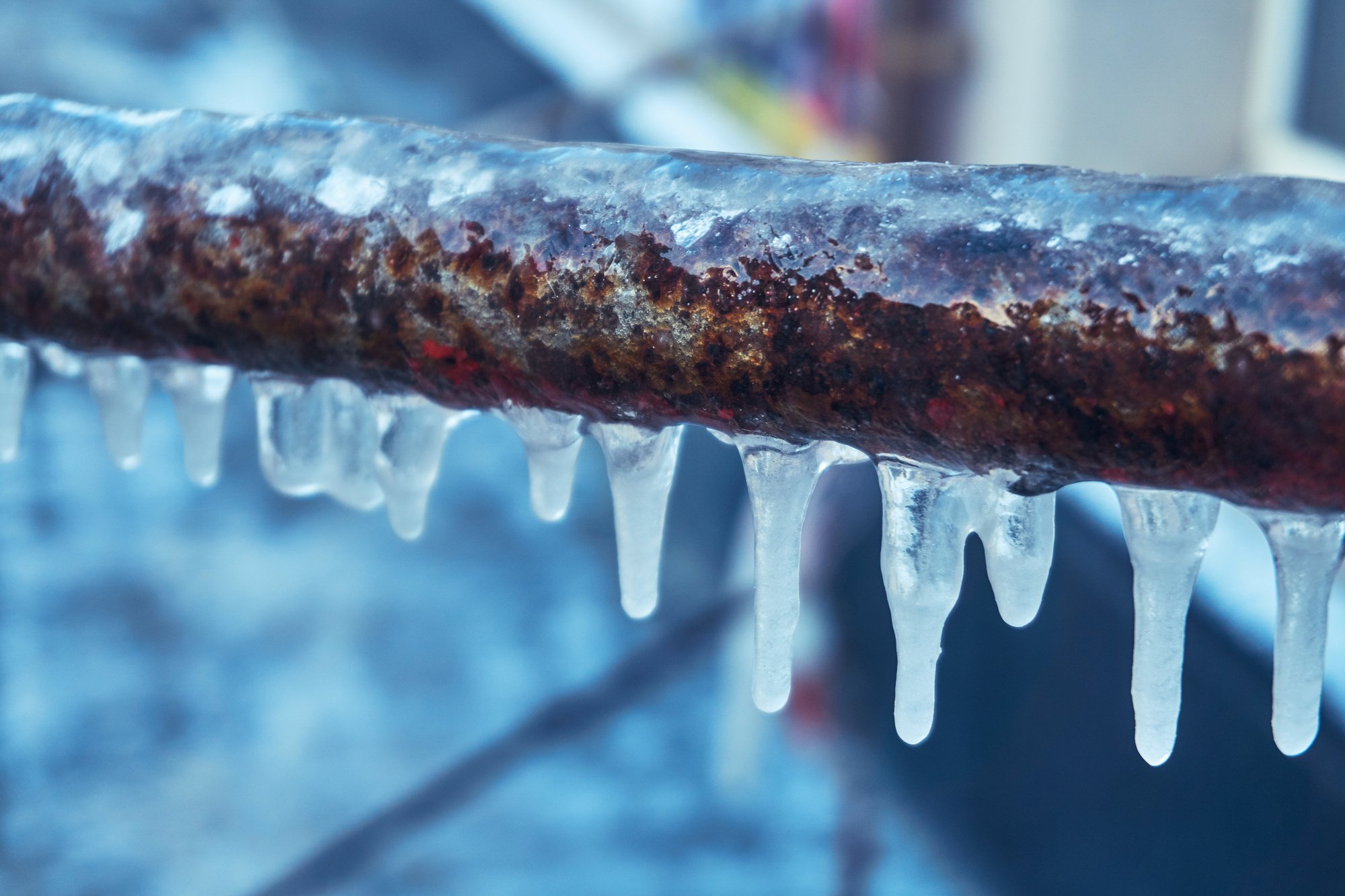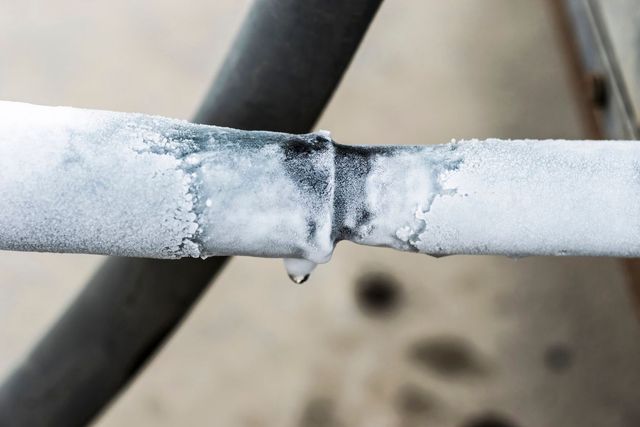Frozen AC Pipe - Identifying and Resolving the Issue Quickly
Frozen AC Pipe - Identifying and Resolving the Issue Quickly
Blog Article
How do you really feel in relation to What Causes AC Pipes To Freeze??

Introduction
Finding that your AC pipe is frozen can be worrying, especially during warm summertime when you rely upon your air conditioner one of the most. Comprehending what to do in such a scenario is critical to avoid more damage to your cooling system and ensure your comfort indoors.
Comprehending the Causes
Numerous variables can contribute to the cold of an AC pipeline. Comprehending these causes can aid you resolve the problem efficiently.
Absence of Airflow
One common source of a frozen AC pipeline is inadequate airflow. When the air movement over the evaporator coil is restricted, it can trigger the coil to drop below freezing temperature, bring about ice formation on the pipeline.
Low Refrigerant Levels
Not enough refrigerant levels in your air conditioner system can also lead to an icy pipeline. Low refrigerant degrees can cause the pressure in the system to go down, causing the cold of moisture on the evaporator coil.
Cold Weather Conditions
In chillier environments, freezing temperatures outside can contribute to the freezing of a/c pipelines. If your a/c device is not effectively insulated or if there are leaks in the ductwork, cold air can penetrate the system, triggering the pipe to freeze.
Dirty Air Filters
Dirty or clogged air filters can limit air flow in your a/c system, causing various problems, consisting of an icy pipeline. It's important to change or cleanse your air filterings system routinely to ensure proper air flow and stop ice accumulation.
Signs of a Frozen Air Conditioner Pipe
Acknowledging the signs of an icy AC pipe is vital for prompt activity.
Lowered Airflow
If you discover a substantial decrease in air movement from your vents, it could suggest an icy pipeline.
Ice Buildup on the Pipe
Noticeable ice build-up on the cooling agent line or the evaporator coil is a clear indication of a frozen a/c pipeline.
Weird Sounds from the Unit
Uncommon noises, such as hissing or gurgling, originating from your air conditioner device can signify that there's ice present on the pipe.
Immediate Actions to Take
When faced with an icy a/c pipe, it's essential to act swiftly to avoid further damage to your air conditioning system.
Switching off the air conditioner
The very first step is to switch off your ac system to prevent the system from running and intensifying the issue.
Looking for Blockages
Examine the location around the indoor unit for any type of obstructions that might be blocking air movement, such as furniture or drapes.
Thawing the Pipe
You can utilize gentle techniques like positioning towels soaked in cozy water around the icy pipe to assist thaw it slowly.
Safety nets
Taking preventive measures can assist stay clear of future occurrences of a frozen a/c pipe.
When DIY Methods Fail
If your efforts to thaw the pipeline or address various other problems are unsuccessful, it's time to call an expert.
Significance of Hiring a Professional HVAC Technician
A qualified HVAC professional has the know-how and tools needed to diagnose and fix issues with your air conditioning system securely and efficiently.
Routine Maintenance Checks
Set up normal maintenance talk to a specialist HVAC specialist to guarantee that your air conditioner system is running effectively.
Changing Air Filters
Consistently change or clean your air filters to stop air flow restrictions and maintain optimal performance.
Shielding Exposed Pipes
If your air conditioning pipelines are subjected to cool temperatures, take into consideration insulating them to stop freezing during winter months.
Looking For Professional Help
If DIY methods fall short to fix the concern or if you're unsure regarding exactly how to continue, it's finest to look for help from a certified HVAC technician.
Final thought
Taking care of an icy a/c pipeline can be an irritating experience, but knowing how to react can aid lessen damages and bring back comfort to your home. By comprehending the causes, recognizing the signs, and taking timely activity, you can efficiently deal with the problem and stop future incidents.
What to Do If Your AC Line Is Frozen
Make Sure All Supply and Return Air Vents Are Open
If you notice problems with airflow, the first thing you should do is check your supply and return vents. Supply vents distribute clean, conditioned air throughout your home. As this air becomes stale, it’s pulled into the return vent, where it’s reconditioned before being sent back out through the supply vent.
When these vents are closed, air won’t flow in the home. Before examining your AC, check the vents in every room and ensure they’re all open.
Check for a Dirty Air Filter
Another possible cause of limited airflow is a dirty air filter. Your air conditioner’s filters catch elements you don’t want to breathe in, such as dirt and dust. Over time, filters can become clogged, ultimately blocking air from flowing in and out. The lack of airflow can then cause the entire coil to freeze and will completely restrict any air from moving through it. The AC may need to be powered off for one to two days to allow the coil to thaw after replacing the filter to allow proper functioning of the unit. This debris can also accumulate on your AC’s evaporator coil, requiring a more serious repair. In general, air filters should be cleaned regularly (about every two weeks).
Assess Your Outdoor Unit
In addition to checking your AC, assessing the outdoor unit is a good idea. Also known as the condensing unit, it works with your interior unit to release heat outside. An issue with the outdoor unit can result in rising internal temperatures.
Overgrown Shrubs or Clogged Leaves
From leaves and twigs to shrubs and debris, there’s no shortage of outdoor elements that can accumulate around your condensing unit. When these elements get lodged inside the unit, they can block airflow. Fortunately, removing the blockage can solve the problem.
Sounds of a Broken Fan
Shrubs and leaves aren’t the only things that can impede your outdoor unit’s airflow. If the fan is broken, the unit won’t be able to properly get rid of heat — which means the internal temperature won’t go down. First, make sure the fan is spinning. If it is, check for the following sounds of a broken fan:
Buzzing Rattling Screeching Hissing Clicking Preventative Measures
Nobody wants to deal with a frozen AC line. In addition to causing problems with your air conditioner, they require professional repairs. On the bright side, there are preventative measures you can take to help ensure this issue doesn’t arise in the first place.
https://www.coopergreenteam.com/blog/what-to-do-if-ac-line-frozen

Do you appreciate more info about How can I fix an air conditioner’s frozen pipe?? Post a review further down. We would be delighted to find out your opinions about this review. We hope that you visit us again in the near future. Appreciated our review? Please share it. Let another person discover it. Thank you for going through it.
Book Report this page